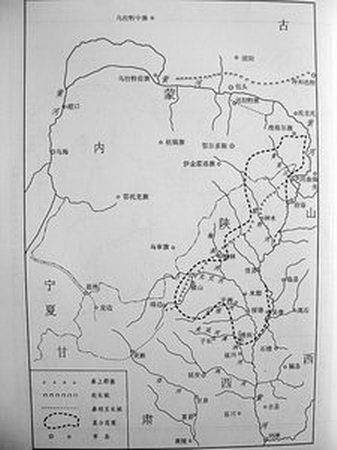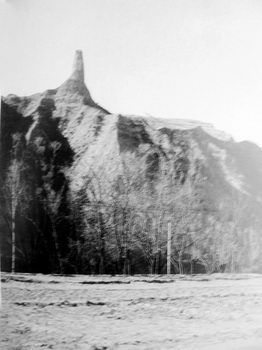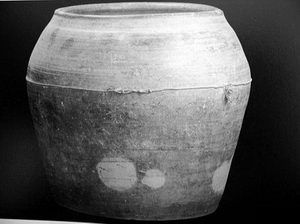A site of the "Xing Tai" dating to the Qin Dynasty (221 BC – 206 BC) has recently been discovered, representing a major development in archeology, CRI reported.
 |
|
Location of the Qin "Xing Tai". Its layout (within the dotted line) covers an area of 28,000 square kilometers. |
The "Xing Tai" consists of 1424 round and oval earth tables, representing a one-to-one mapping with 323 constellations in the sky, as well as important mountains, rivers, counties, cities, palaces, armies, prisons, officials, etc on land. In ancient times, the observatories and sacrificial altars of "Xing Tai" were used by China's rulers to observe the stars, offer sacrifices, and cast horoscopes to predict affairs of state.
Qin "Xing Tai", most of which lies in northern Shaanxi Province, covers an area of 28,000 square kilometers. Lying to the south of Ordos Plateau, the Qin "Xing Tai" is on the west of Yellow River with the Ming Great Wall cutting through it on the east side.
 |
|
The Qin "Xing Tai" site at Fangta Village, Jia County. |
According to research, the Emperor Qin Shihuang, after unifying China in 221 BC, ordered the construction of the observatories and altars under the guidance of the famous general Meng Tian. This huge project, which took 6 years to complete, was designed as a representation of the beautiful and merciful Goddess Nuwa in outline. The area covered is 337 kilometers in length and 152 kilometers wide.
Chen Meidong, a researcher from the Chinese Academy of Social Sciences, said the massive and complex project has an important place in the history of Chinese architecture.
 |
|
A sacrificial utensil unearthed near the site of Qin "Xing Tai"; the white spots on the jar are believed to represent the movements of the stars. |
Chen also added that the discovery of the ruins is a significant academic achievement in archeology, which will certainly fill a gap in the history of Chinese astronomy and philosophy.
(China.org.cn by Xiang Bin, November 17, 2008)